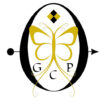Paperless genealogy: A commitment
Today, as I watch the Notre Dame Cathedral in flames, I know I cannot put this post off any longer. Our research is a fragile thing, if dependent upon paper files. It’s unsafe if dependent upon a single copy in any form. Not even two copies will save it in a disaster, if both are kept together. You’ve heard it all before. You need to commit to paperless genealogy. But today, please hear it and act.
…Paperless genealogy: A commitment Read More »













